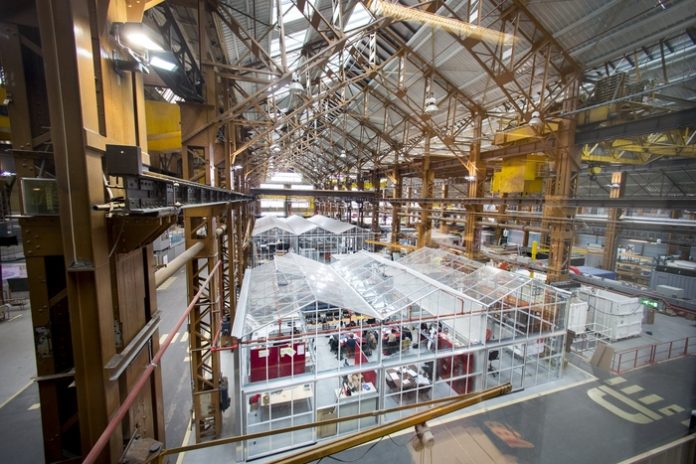Repurposed industrial buildings could be key to attracting knowledge economy occupiers, according to a new study from JLL and architects Hawkins\Brown.
The new report, which is the first comparative study of its kind, analysed 30 successful industrial-to-commercial conversion projects from around the world. These include Manchester’s The Sharp Project – the 200,000 sq ft refurbished warehouse that’s now home to 60 digital entrepreneurs and production companies.
The study found that the appeal of refurbished industrial buildings lies in their large spans and high ceilings, which stimulate creative thinking, and the ability to accommodate rapid growth, due the built-in flexibility of being constructed with the rigors of industry in mind.
The study, Industrial Rehab: a new space of opportunity, was launched last week (Thursday 11th October) at an event at Hawkins\Brown’s Northern Quarter practice on Tariff Street in Manchester.
It found that, while the cost of industrial rehab is typically circa 11% above the cost of refurbishing an office building, when costs are analysed from a volumetric perspective the Industrial Rehab case studies demonstrated extraordinary value. Average construction costs were £7.18 per cb ft, with individual building costs ranging from £2.85-£16.52 per cb ft. These figures are significantly below typical refurbishment costs.
Michael Davis, head of JLL London Unlimited, said: “Our new report demonstrates how unique, charismatic spaces created from old industrial stock hold intrinsic appeal for occupiers in the creative industries and knowledge economy. It’s a reminder that, as Manchester looks to attract and retain a diverse occupier base, it must offer a wide range of commercial space.
“Given the ability for unique buildings that boast awe-inspiring features to impact employee satisfaction and productivity, it’s easy to see how the appeal of these spaces could spread to other sectors, as wellbeing continues to rise to top of the corporate agenda in the UK.”
Nicola Rutt, Partner and Head of Workplace at Hawkins\Brown said: “Creativity and innovation are the key commodities in the workplace of today. Large spaces give us space to dream: we are more creative and better able to think in the abstract when we work in a room with a high ceiling.
“The projects in Industrial Rehab make a compelling case for the retention of industrial buildings. Moreover, their scale and charisma, as well as the business communities they help to create, take them from eyesore to icon and make them a powerful catalyst for the regeneration of former industrial areas.”






















